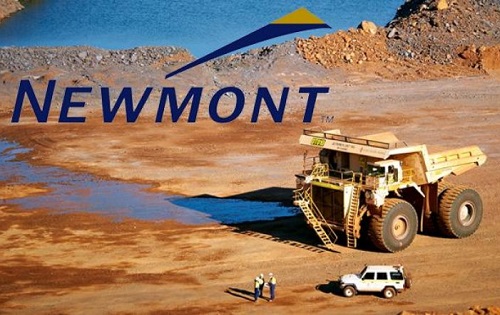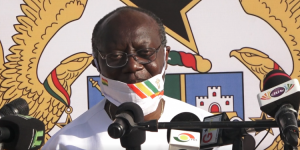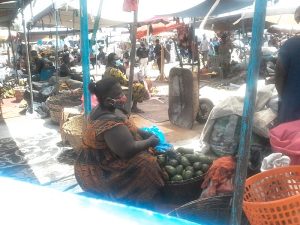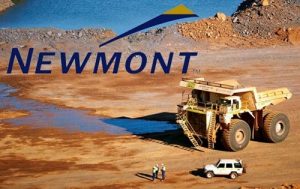Newmont Corporation on Thursday, announced its third-quarter 2021 results with $735 million in free cash flow.
THIRD-QUARTER 2021 HIGHLIGHTS
- Produced 1.45 million attributable ounces of gold and 315 thousand attributable gold equivalent ounces from co-products
- Reported gold CAS of $830 per ounce and AISC of $1,120 per ounce
- Updated full-year guidance of 6.0 million ounces of attributable gold production, $790 per ounce of CAS and $1,050 per ounce of AISC, reaffirming original guidance of 1.3 million gold equivalent ounces from copper, silver, lead and zinc
- Generated $1.1 billion of cash from continuing operations and $735 million of Free Cash Flow (97 per cent attributable to Newmont)
- Declared third-quarter dividend of $0.55 per share, consistent with the previous quarter
- Completed $99 million of share repurchases from $1 billion buyback program
- Ended the quarter with $4.6 billion of consolidated cash and $7.6 billion of liquidity with a net debt to adjusted EBITDA ratio of 0.2x
- Delivered the gold industry’s first Autonomous Haulage System (AHS) fleet, improving safety and long-term productivity at Boddington Advancing near-term projects, including Tanami Expansion 2, Ahafo North and the mining method change at Subika Underground Progressing Yanacocha Sulfides, investing at least $500M through 2022 with a full funds decision expected in the second half of 2022
“Newmont delivered on a challenging third-quarter performance with $1.3 billion in adjusted EBITDA and $735 million in free cash flow, building momentum for a strong fourth quarter,” said Tom Palmer, Newmont President and Chief Executive Officer.
“Supported by our clear strategic focus and proven operating model, we continue to apply our disciplined approach to capital allocation. A year ago, we announced our industry-leading dividend framework, establishing a clear pathway for stable and predictable returns. Over the last four quarters, Newmont has steadily reinvested in our operations while returning more than $2 billion dollars to shareholders through dividends and share buybacks, demonstrating our confidence in the long-term value of our business and our ability to maintain financial flexibility.”
Attributable gold production decreased 6 per cent to 1,449 thousand ounces from the prior-year quarter primarily due to lower throughput at Nevada Gold Mines as a result of a mechanical failure in May 2021 which resulted in a partial shutdown of the Goldstrike mill at Carlin until it was fully repaired in September 2021, lower leach production, mill recovery and ore grade milled at CC&V, lower throughput at Tanami as the mine was placed under care and maintenance in July 2021 and lower throughput, grade milled and recovery at Boddington. These decreases were partially offset by higher throughput at Cerro Negro due to reduced operations in the prior-year quarter in response to Covid.
Gold CAS increased 4 per cent to $1,175 million from the prior-year quarter. Gold CAS per ounce increased 10 per cent to $830 per ounce from the prior-year quarter primarily due to lower gold ounces sold, higher diesel costs, an unfavourable Australian dollar foreign currency exchange rate and higher royalty payments at Akyem and Nevada Gold Mines. These increases were partially offset by a build of inventory.
Gold AISC increased 10 per cent to $1,120 per ounce from the prior-year quarter primarily due to higher CAS per ounce and higher sustaining capital spend. These increases were partially offset by lower treatment and refining costs.
Attributable gold equivalent ounce (GEO) production from other metals increased 15 per cent to 315 thousand ounces primarily due to higher throughput and recoveries at Peñasquito.
CAS from other metals totalled $192 million for the quarter.
CAS per GEO increased 15 per cent to $638 per ounce from the prior-year quarter primarily due to higher allocation of costs to other metals and higher concentrate selling expenses at Peñasquito and Boddington. These increases were partially offset by higher gold equivalent ounces sold.
AISC per GEO increased 15 per cent to $887 per ounce primarily due to higher CAS per GEO and higher sustaining capital spend.
Net loss from continuing operations attributable to Newmont stockholders was $(8) million or $(0.01) per diluted share, a decrease of $619 million from the prior-year quarter primarily due to the loss recognised on the pending sale of the Conga mill assets of $571 million, lower average realized gold prices, lower gold sales volumes, unrealized losses on marketable and other equity securities, higher CAS and higher reclamation and remediation charges. These decreases were partially offset by lower income tax expense and lower impairment of long-lived assets.
Adjusted net income was $483 million or $0.60 per diluted share, compared to $697 million or $0.86 per diluted share in the prior-year quarter. Primary adjustments to third-quarter net income include the loss recognized on the pending sale of the Conga mill assets, changes in the fair value of investments, reclamation and remediation charges and valuation allowance and other tax adjustments.
Adjusted EBITDA decreased 21 per cent to $1,316 million for the quarter, compared to $1,663 million for the prior-year quarter.
Revenue decreased 9 per cent from the prior-year quarter to $2,895 million primarily due to lower average realized gold prices and lower gold sales volumes.
The average realized price for gold was $1,778, a decrease of $135 per ounce over the prior-year quarter. Average realized gold price includes $1,784 per ounce of the gross price received, the favourable impact of $4 per ounce mark-to-market on provisionally-priced sales and reductions of $10 per ounce for treatment and refining charges.
Capital expenditures increased 34 per cent from the prior-year quarter to $398 million primarily due to higher sustaining capital spend from sites that were placed into care and maintenance in response to Covid during 2020 and higher development capital spend. Development capital expenditures in 2021 primarily include advancing Tanami Expansion 2, Yanacocha Sulfides, Ahafo North, the Subika Mining Method Change, Cerro Negro expansion projects, Quecher Main, Pamour, the Power Generation Civil Upgrade, Goldrush Complex and Turquoise Ridge 3rd shaft.
Consolidated operating cash flow from continuing operations decreased 29 per cent from the prior-year quarter to $1,133 million primarily due to lower average realized gold prices and lower gold sales volumes, an increase in tax payments and an increase in prepaid assets.
Free Cash Flow also decreased to $735 million primarily due to lower operating cash flow and higher capital expenditures as described above.
Balance sheet and liquidity ended the quarter with $4.6 billion of consolidated cash and approximately $7.6 billion of liquidity; reported net debt to adjusted EBITDA of 0.2x.
Nevada Gold Mines (NGM) attributable gold production was 308 thousand ounces with CAS of $768 per ounce and AISC of $945 per ounce for the third quarter. EBITDA for NGM was $293 million.
Pueblo Viejo (PV) attributable gold production was 85 thousand ounces for the quarter. Pueblo Viejo EBITDA was $108 million and cash distributions received for the Company’s equity method investment totalled $69 million in the third quarter.
PROJECTS UPDATE
Newmont’s capital-efficient project pipeline supports improving production, lowering costs and extending mine life. Funding for the current development capital projects Tanami Expansion 2 and Ahafo North has been approved and these projects are in the execution stage. The Company has included the Yanacocha Sulfides project in its long-term outlook as the project is currently scheduled to be approved for full funding in the second half of 2022. Additional development projects, not listed below, represent incremental improvements to the Company’s outlook.
Tanami Expansion 2 (Australia) secures Tanami’s future as a long-life, low-cost producer with the potential to extend mine life beyond 2040 through the addition of a 1,460-meter hoisting shaft and supporting infrastructure to achieve 3.5 million tonnes per year of production and provide a platform for future growth.
The expansion is expected to increase average annual gold production by approximately 150,000 to 200,000 ounces per year for the first five years and is expected to reduce operating costs by approximately 10 per cent.
Capital costs for the project are estimated to be between $850 million and $950 million with a commercial production date in the first half of 2024. Ahafo North (Africa) expands our existing footprint in Ghana with four open-pit mines and a stand-alone mill located approximately 30 kilometres from the Company’s Ahafo South operations.
The project is expected to add between 275,000 and 325,000 ounces per year with all-in sustaining costs between $600 to $700 per ounce for the first five full years of production (2024-2028).
Capital costs for the project are estimated to be between $750 and $850 million with a construction completion date in the second half of 2023 and commercial production in early 2024.
Ahafo North is the best-unmined gold deposit in West Africa with approximately 3.5 million ounces of Reserves and more than 1 million ounces of Measured and Indicated and Inferred Resource11 and significant upside potential to extend beyond Ahafo North’s current 13-year mine life.
Yanacocha Sulfides (South America)12 will develop the first phase of sulfide deposits and an integrated processing circuit, including an autoclave to process gold, copper and silver feedstock.
The project is expected to add 500,000 gold equivalent ounces per year with all-in sustaining costs between $700 to $800 per ounce for the first five full years of production.
An investment decision is expected in the second half of 2022 with a three year development period.
The first phase focuses on developing the Yanacocha Verde and Chaquicocha deposits to extend Yanacocha’s operations beyond 2040 with the second and third phases having the potential to extend life for multiple decades.







